
Branches Profile
Mabuchi’s core competence in packing solutions has brought the company to become a renowned packing suppliers Malaysia and Singapore company by adopting quality packing materials Malaysia and Singapore in our services. Our services are unique in a way that we provide customized packaging solutions to our customers. To us, each job is unique and specially designed packing methods to suit the items to keep it safe upon arriving to its destination.
Wooden Pallet
Wooden Pallet
Wooden pallet is a flat transport structure that supports goods on stable fashion while being lifter by a forklift,pallet jack,front loader,work saver, or other jacking device or a crane.Wooden pallet is the structural foundation of a unit load which allows handling and storage efficiencies. Goods of shipping containers are often place on pallet secured with strapping ,stretch wrap or shrink wrap and shipped.
Wooden Pallet type
1. Wooden Pallet 2 way entry

2. Wooden Pallet 4 way entry.
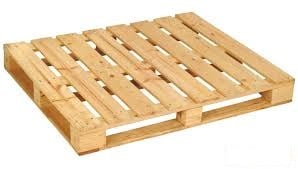
3. Wing Pallet
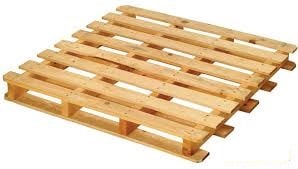
4. Used Pallet
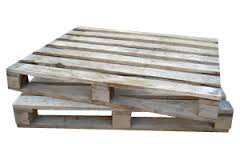
Comparison between Wooden pallet and Plastic pallet.
| No. | Wooden Pallet | Plastic Pallet |
| 1 | Cheap | Expensive |
| 2 | Repairable | Not able to repair |
| 3 | Recycable | Recycable |
| 4 | Easy to broken | Not easy to broken |
| 5 | Easy to contamination | Resistant to contamination |
| 6 | Not suitable fo strict hygiene area | Suitable for strict hygiene area |
| 7 | Require Fumigation/ Heat Treatment for Export purpose | Not require |
| 8 | Short service life span | Longer service life span |
Fumigation is a method of pest control that completely fills an area with gasous or fumigants to suffocate or poison the pest within. Main purpose is to prevent the international transport and spread of disease and insects that could negatively affect plants or ecosystems.
You are welcome to discuss with us if you want different design or dimension of Wooden Pallet.![]()
Plastic Product -Vacuum forming vs Injection Moulding
What is Vacuum Forming?
Vacuum forming also recognised as thermoforming is a manufacturing process whereby plastic sheets are preheated in automated vacuum forming equipment until soft and malleable. The preheated sheet then makes contact with a mould or form and a vacuum source is turned on that sucks the sheet to the mould. When cool, the sheet takes the shape of the mould. It is then trimmed with die cut.

What is Injection Moulding?
The process of injection moulding begins with granules of polymer which are put in a hopper and released into a heated barrel. A screw feeds the material along the heated barrel where it is plasticised. The then liquid polymer is injected into a steel or aluminium mould through a gate, being held in a press under acute pressure. Post cooling, the mould opens and the finished parts are ejected from the mould.
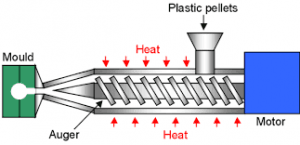
Process
| Process | Vacuum Forming | Injection Mould | |
| Tooling | A single 3D form created out of aluminium | A double-sided 3D mold is created out of steel, aluminium or a beryllium-copper alloy. | |
| Materials | Flat sheet of Thermoplastic available in a wide varienty of materials,finishes,colors and thicknesses | Thermoplastic pellets , available in a wide variety materials and colors. | |
| Production | A flat of plastic is heated to a pliable temperature,then molded to the tools shape using either suction from a vacuum or both suction and pressure | The plastic pellets are heated to a liquid state, then injected into the mold. | |
| Finishing | The final pieces are trimmed robotically, then can be used uncoated or painted, silk screened or have specialty coatings applied. | The final pieces are moved from the mold, then often need to be painted for aesthetic reasons and can also be silk screeened or have specialty coatings. |
Advantages Vacuum Forming & Injection Moulding
| Advantages Vacuum Forming | Advantanges Injection Moulding | |
| 1) Reasonably fast prototyping and production time frames | 1) Inserts can be used within the mould, and fillers added for strength | |
| 2) Ability to create large parts (up to 48 inches x 70 inches) | 2) Close tolerances on small intricate parts are achievable | |
| 3) Lower start-up costs — patterns and moulds can be made economically from MDF, high density foams and epoxy | 3) Ejected parts normally have a very finished look | |
| 4) Ideal for repeat jobs — aluminium castings can be made which have practically unlimited lifetimes | 4) Low levels of waste – scrap can be reground to be reused | |
| 5) Good price point on small and medium runs | 5) Allows for high production runs |
Disadvantages Vacuum Forming & Injection Moulding
| Disadvantages Vacuum Forming | Disadvantanges Injection Moulding | |
| 1) Consistent wall thickness is not achievable, very deep parts can be challenging | 1) Higher start-up costs | |
| 2) Only one material can be formed at a time | 2) Requires an intense level of engineering expertise and time | |
| 3) Higher per-piece costs make vacuum forming non-competitive with other computerised processes where quantities are higher | 3)Longer time frames due to manufacture of mould | |
| 4) Some clear parts will exhibit mark-off (defects or dirt from mould will transfer to parts) |
To conclude, both processes have their strengths and weaknesses. In determining which method is best for your particular product would recommend that you consider the following issues:
- Production quantity
- Design & Engineering requirements
- Time frame
- Start-up costs & Budget
Corrugated Carton Box Flute & Carton Box types
What is Carton fluting?
Corrugated material is comprised of three fiberboard layers; two linerboards sandwich a middle sheet that is in a wave-shaped a pattern of arches known as flutes. These flutes are anchored to the linerboard with an adhesive.
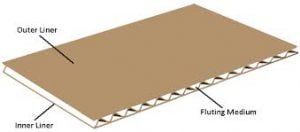
Fluting is the element of corrugated cardboard that contributes to material strength for stacking, resistance to crushing, or suitability for other uses, such as graphic reproduction. The types of fluting vary depending upon how many flutes are included per foot, and how thick the fluting is.
Corrugated box fluting comes in different sizes and varieties to be used for different applications. But generally, the larger the flute (A & B profiles) the greater the strength and cushioning. And the smaller the flute (D & E profiles) the better the printability and foldability. There is a good deal of variance across the industry in the range of flute sizes based upon the container characteristics that are desired for each application, as well.
There are five standard types of fluting:
A-Flute : A-Flute is the original fluting for corrugated boxes. With about 36 flutes per foot, it can be used for a double wall application or thick corrugated pad.
B-Flute : B-Flute is Primarily used for canned goods packaging, the B flute provides the second highest arch size at about 49 flutes per foot. Because of its good stacking strength and crushing resistance, some common uses are for food packaging, retail packaging, POP (point of purchase) displays, die cut inserts, and customized print packaging.
C-Flute : C-Flute is the most commonly used corrugated box flute. As an all-purpose flute, the C flute has about 41 flutes per foot and provides good cushioning, stacking and printing properties. Some common packaging uses include shipping cartons, master shippers and corrugated box displays.
E-Flute : E-Flute is the second most commonly used corrugated box. E flutes are an environmentally friendly substitute for green packaging compared to printed folding cartons. At about 90 flutes per foot, it is also used to print high quality direct print graphics compared to its counterparts. Common uses include retail packaging, printed corrugated box packaging, POP packaging, and those looking for eco-friendly packaging.
F-Flute : F-Flute is small, tighter flute is also an environmentally friendly replacement to folding cartons. At about 128 flutes per foot, the F flute will offer a very high-value look and provide packaging with solid structural integrity. Common uses include custom printed boxes, printed corrugated boxes, retail packaging and POP displays.

Corrugated come in different wall of construction
*Single face-One corrugated medium is glued to one flat sheet of linerboard.
*Single Wall-The corrugated medium is glued between two sheets of linerboard. Also known as Double Face.
*Double Wall-Three sheets of linerboard with two mediums in between.
*Triple Wall-Four sheets of linerboard with three mediums in between.
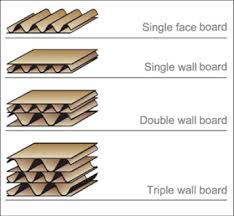
Carton box types
Corrugated boxes are designed to meet the specific needs of the product being packaged. Factors contributing to the packaging design include shipping hazards such as vibration, shock, compression, and moisture. In addition to the particular needs of the consumers and retailers, packaging engineers consider the cost restraints, specific product characteristics, logistical needs, consumer needs, and machine capabilities when designing a variety of corrugated box styles
- RSC-Regular Slotted Carton
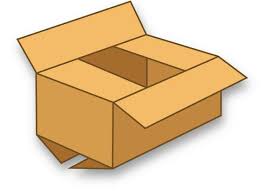
- HSC-Half Slotted Carton
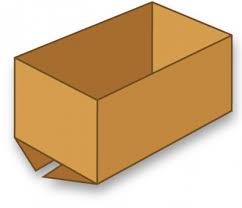
- FOL-Full Over lap Slotted Carton
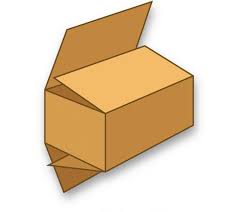
- Die Cut Carton
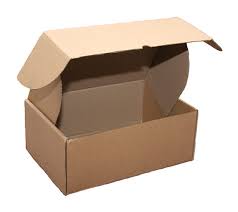
- One piece Folder Carton

It is important to decide which flutes suitable for your usage carton box.
Open Web Site – Thailand
Mabuchi (Thailand) Co. Ltd. open new website on August 2017.
Fumigation & Heat Treatment
What is Fumigation?
Fumigation is a method of killing pests, termites or any other harmful living organisms to prevent transfer of exotic organisms. Fumigation is executed, by suffocating or poisoning pest, within an area of specified space by using fumigants. Normally, fumigation is done for wood material used for packing of goods to be exported to prevent transfer of exotic organisms.
Fumigation of Wooden Crates:
Fumigation of wooden crates should be carried out with methyl bromide at the dosage of 48 grams per meter cube. In this process the wooden packing crates are placed in the fumigation covers under a smooth floor and then it converted completely. The gas monitoring lines for measuring gas concentration during the exposure period is placed at different locations as per requirements. The fumigation covers are sealed with the help of sand snakes and an air tight enclosure is made. The total cubic area of the enclosure is measured and the required dosage of methyl bromide is administrated. Gas monitoring is carried out during the exposure period. After the exposure period of 24 hours the fumigation covers are removed and the empty wooden crates are aerated.

What is Heat Treatment?
Heat Treatment is method of wood sterilization, the wooden crates and wood shipping pallets are heated until they reach a minimum core temperature of 56 °C (132.8 °F) for at least 30 minutes. This can be achieved by using a dry kiln or any other approved heat treatment chamber/device.Heat treatment will likely become the most popular method due to environmental concerns caused by methyl bromide used to fumigate packaging.

Fumigation Or Heat Treatment Marking
Wood packaging material bearing the stamp or mark below is certified as being ISPM 15 compliant. It may be stamped or branded to the wood packaging material in any colour.
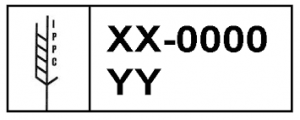
- IPPC certification symbol (this is a registered trade mark).
- XX: represents the two letter ISO country code where the wood was treated.MY for Malaysia.
- 000: represents the unique certification number (which ensures that the wood packaging material can be traced back to the treatment provider and/or manufacturer).
- YY: is the treatment abbreviation where:
- HT: is the code for heat treatment using conventional steam or dry kiln heat chamber to a minimum of 56º C for a minimum of 30 minutes
- MB: is the code for methyl bromide fumigation
- DH: is the code for heat treatment using dielectric heat
Sample Marking Heat Treatment in Malaysia:

IPPC is short for International Plant Protection Convention. They developed a standard for wood packaging in international business, called ISPM-15.
International Standards For Phytosanitary Measures No. 15 (ISPM 15) is anInternational Standards for Phytosanitary Measures Guidelines developed by theInternational Plant Protection Convention (IPPC) that directly addresses the need to treat wood materials of a thickness greater than 6mm, used to ship products between countries. Its main purpose is to prevent the international transport and spread of disease and insects that could negatively affect plants or ecosystems.The IPPC standard(ISPM-15) allows for two treatment methods – heat treatment and fumigation with methyl bromide.








